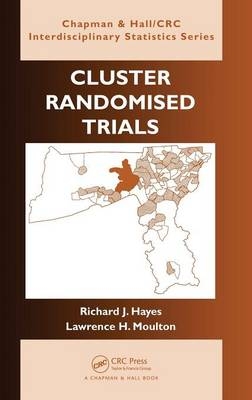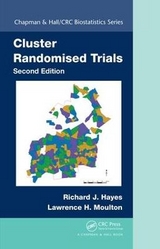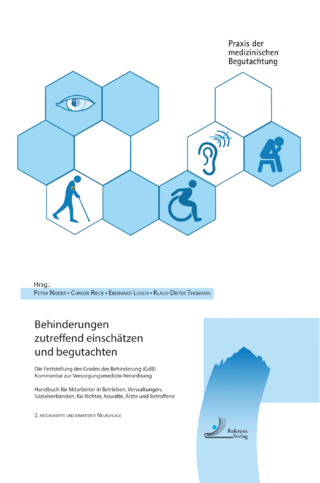
Cluster Randomised Trials
Chapman & Hall/CRC (Verlag)
978-1-58488-816-1 (ISBN)
- Titel erscheint in neuer Auflage
- Artikel merken
Cluster Randomised Trials discusses the design, conduct, and analysis of health trials that randomise groups of individuals to different treatments. It explores the advantages of cluster randomization, with special attention given to evaluating the effects of interventions against infectious diseases.
Avoiding unnecessary mathematical detail, the book covers basic concepts underlying the use of cluster randomisation, such as direct, indirect, and total effects. The authors also present an array of design issues in cluster randomised trials (CRTs), including strategies for minimizing contamination effects, the use of stratification and restricted randomisation to improve balance between treatment arms, special methods for sample size calculation, and alternatives to the simplest two-arm CRT. After covering analytical methods for CRTs, such as regression methods, the authors examine ethical issues, trial monitoring, interim analyses, reporting, and interpretation.
Although the book mainly focuses on medical and public health applications, it shows that the rigorous evidence of intervention effects provided by CRTs has the potential to inform public policy in a wide range of other areas. The book encourages readers to apply the methods to their own trials, reproduce the analyses presented, and explore alternative approaches.
London School of Hygiene & Tropical Medicine, London, UK Johns Hopkins Bloomberg School of Public Health, Baltimore, University of Kent, UK University of Copenhagen, Denmark Utrecht University, The Netherlands University of California, Berkeley, USA
BASIC CONCEPTS
Introduction
Randomised Trials
Variability between Clusters
Introduction
The Implications of between-Cluster Variability: Some Examples
Measures of between-Cluster Variability
The Design Effect
Sources of within-Cluster Correlation
Choosing whether to Randomise by Cluster
Introduction
Rationale for Cluster Randomisation
Using Cluster Randomisation to Capture Indirect Effects of Intervention
Disadvantages and Limitations of Cluster Randomisation
DESIGN ISSUES
Choice of Clusters
Introduction
Types of Cluster
Size of Clusters
Strategies to Reduce Contamination
Levels of Randomisation, Intervention, Data Collection, and Inference
Matching and Stratification
Introduction
Rationale for Matching
Disadvantages of Matching
Stratification as an Alternative to Matching
Choice of Matching Variables
Choosing whether to Match or Stratify
Randomisation Procedures
Introduction
Restricted Randomisation
Some Practical Aspects of Randomisation
Sample Size
Introduction
Sample Size for Unmatched Trials
Sample Size for Matched and Stratified Trials
Estimating the between-Cluster Coefficient of Variation
Choice of Sample Size in Each Cluster
Further Issues in Sample Size Calculation
Alternative Study Designs
Introduction
Design Choices for Treatment Arms
Design Choices for Impact Evaluation
ANALYTICAL METHODS
Basic Principles of Analysis
Introduction
Experimental and Observational Units
Parameters of Interest
Approaches to Analysis
Baseline Analysis
Analysis Based on Cluster-Level Summaries
Introduction
Point Estimates of Intervention Effects
Statistical Inference Based on the t Distribution
Statistical Inference Based on a Quasilikelihood Approach
Adjusting for Covariates
Nonparametric Methods
Analysing for Effect Modification
Regression Analysis Based on Individual-Level Data
Introduction
Random Effects Models
Generalised Estimating Equations
Choice of Analytical Method
Analysing for Effect Modification
More Complex Analyses
Analysis of Trials with More Complex Designs
Introduction
Analysis of Pair-Matched Trials
Analysis of Stratified Trials
Analysis of Other Study Designs
MISCELLANEOUS TOPICS
Ethical Considerations
Introduction
General Principles
Ethical Issues in Group Allocation
Informed Consent in Cluster Randomised Trials
Other Ethical Issues
Conclusion
Data Monitoring
Introduction
Data Monitoring Committees
Interim Analyses
Reporting and Interpretation
Introduction
Reporting of Cluster Randomised Trials
Interpretation and Generalisability
References
Index
| Erscheint lt. Verlag | 13.1.2009 |
|---|---|
| Reihe/Serie | Chapman & Hall/CRC Biostatistics Series |
| Zusatzinfo | 22 Illustrations, black and white |
| Sprache | englisch |
| Maße | 156 x 234 mm |
| Gewicht | 658 g |
| Themenwelt | Medizin / Pharmazie |
| ISBN-10 | 1-58488-816-4 / 1584888164 |
| ISBN-13 | 978-1-58488-816-1 / 9781584888161 |
| Zustand | Neuware |
| Informationen gemäß Produktsicherheitsverordnung (GPSR) | |
| Haben Sie eine Frage zum Produkt? |
aus dem Bereich



